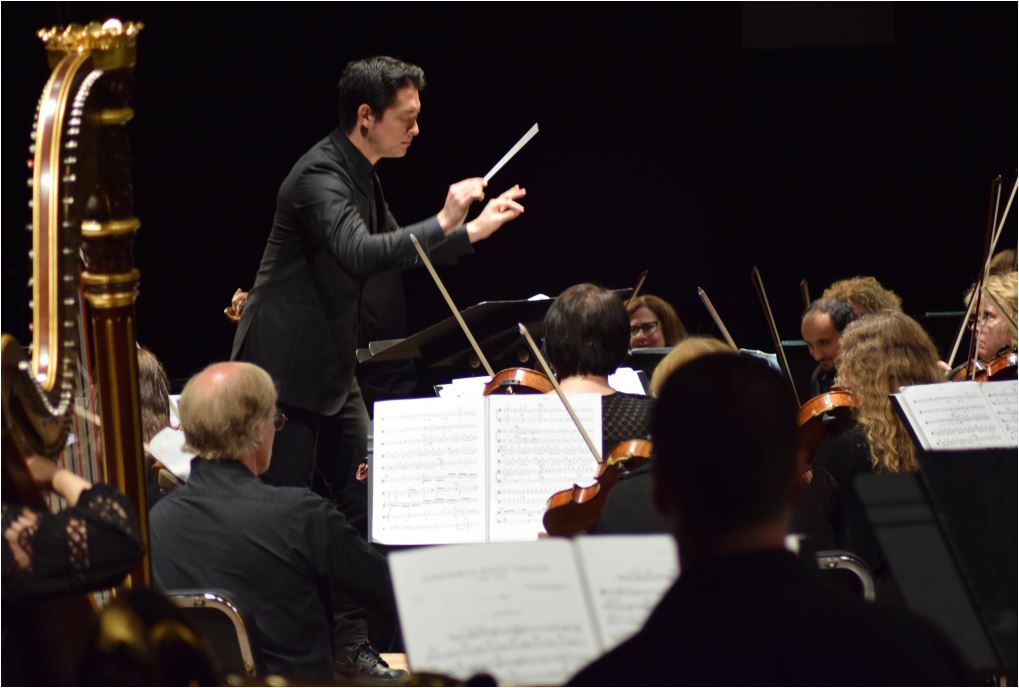
RSO’s December 1st Concert was TERRIFIC!
Laurie Kenagy, Ridgefield Symphony’s Executive Director, greeted the audience at the orchestra’s concert last Saturday evening at the Anne Richardson Auditorium with a promise that they were in for a real treat; and what followed fulfilled her promise. Entitled “Love Letter” because love was either the subject or inspiration for each of the scheduled works, RSO Music Director Yuga’s Cohler’s program included Tchaikovsky’s Romeo and Juliet Fantasy-Overture, Brahms’s Symphony No. 2 in D Major, and (as the program’s highlight and special treat) composer and bassist Michael Thurber’s “Love Letter”, a unique violin concerto written for and musically descriptive of violinist Tessa Lark, who was the evening’s guest soloist.
In arguably the first of his works in which his creative genius was unquestionably evident, Tchaikovsky, clearly a “Romantic” composer, used the classical sonata form for structural integrity, skillfully adapting it to reflect the tragedy of two young lovers who are caught in the pointless violence of a feud between their two families – not to tell their story, but rather to capture and musically project the intense emotional dilemma of young love pitted against mindless violence.
Maestro Cohler was in control throughout, skillfully managing sectional balances and expressive nuances. Impressive brass performance and evenness of quality at the beginning of the introduction’s churchlike solemnity was only one of many instances of improved balance and both individual and sectional tone quality, especially evident in the woodwind and brass sections separately and in ensemble. Cohler’s overall guidance and direction are evident and augur well for the orchestra’s future.
Unlike his rather stormy first symphony, over which Brahms had struggled for months, the second symphony, which he completed surprisingly quickly and which is richly lyrical, puzzled his friends, some of whom speculated that the reason for both his more relaxed approach and the work’s more lyrical quality might be the influence of a recent romantic feeling Brahms had exhibited toward a lady friend. Hence the work’s inclusion as a “Love Letter.” Brahms insisted, though, that his mood had been inspired entirely by the calm and beauty of the Austrian resort where he had spent his recent summer. Under Maestro Cohler’s able management, the orchestra gave a fine performance, especially of the Scherzo, with its contrastingly lyrical middle section, and the spirited sonata-form final movement.
Tessa Lark, growing up in Kentucky, was early exposed to Bluegrass and Appalachian music; and although she declares herself to be a “classical” violinist, she admits that other musical traditions influence and color her approach to music generally. And Michael Thurber’s similar early musical background explains both his special feelings for Tessa Lark and the approach to composition, which is evident in the amalgam (in varying ways) of various musical traditions, including Classical, Hip-Hop, Bluegrass, Jazz, African, and Rock, in the wonderful musical fabric of each of Love Letters’ four movements.
Miss Lark’s wonderful performance in all of Love Letter’s myriad moods was both musically and visually riveting, especially in the fourth movement (“Whiskey Woman”); and when, after she received a well-deserved ovation, composer Thurber appeared onstage with his bass and joined her in a delightful duet the two of them had composed together, audience captivation was complete. It was a terrific concert!
Learn more about the RSO here.